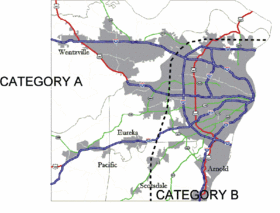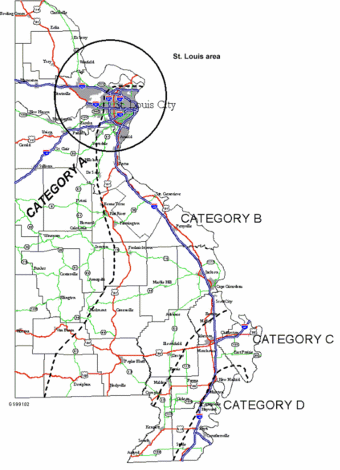Difference between revisions of "Category:756 Seismic Design"
(Added Links to Innovation Library.) |
m (linked to additional info on cable-stayed bridge) |
||
| Line 24: | Line 24: | ||
|[http://library.modot.mo.gov/RDT/reports/Ri01028/rdt05007.pdf Summary 2005] | |[http://library.modot.mo.gov/RDT/reports/Ri01028/rdt05007.pdf Summary 2005] | ||
|- | |- | ||
| − | |'''Bridge, Cable-Stayed, Seismic''' | + | |'''[[media:756 cable stayed bridge.doc|Bridge, Cable-Stayed]], Seismic''' |
|- | |- | ||
|[http://library.modot.mo.gov/RDT/reports/Ri05023/or08003.pdf Report 2007] | |[http://library.modot.mo.gov/RDT/reports/Ri05023/or08003.pdf Report 2007] | ||
Revision as of 14:45, 30 September 2010
All new bridges on the state system shall include some level of seismic design and/or detailing to resist earthquakes based upon an expected seismic event for a given return period. For example, in Seismic Performance Categories B, C and D, both design and detailing work is needed because of the increased probability of damaging earthquakes.
| Bridge Seismic Design Process Flowchart |

|
When existing bridges in SPC B, C and D are identified as needing repairs or maintenance, a decision on whether to include seismic retrofitting in the scope of the project should be made based on the location of the bridge, the extent of the rehabilitation work and the expected life of the bridge after the work. For example, if the bridge needs painting or deck patching, no retrofitting is recommended. However, redecking or widening the bridge indicates that MoDOT is planning to keep the bridge in the state system with an expected life of at least 30 more years. In these instances, the project core team should consider cost effective methods of retrofitting the existing bridge.
| Bridge Dampers, Seismic |
| Report 2005 |
| Summary 2005 |
| Bridge, Cable-Stayed, Seismic |
| Report 2007 |
| Earthquake Hazard Assessment |
| Report 2001 |
| Summary 2001 |
| See also: Innovation Library |
